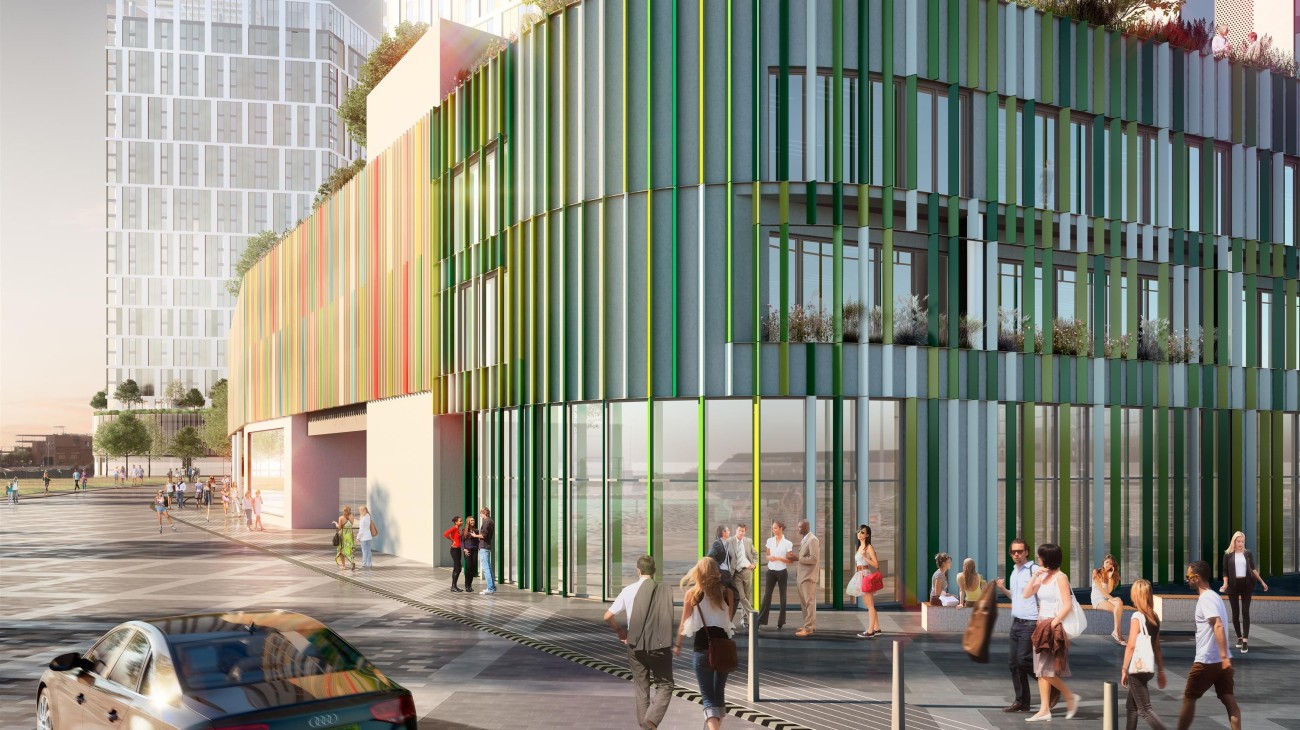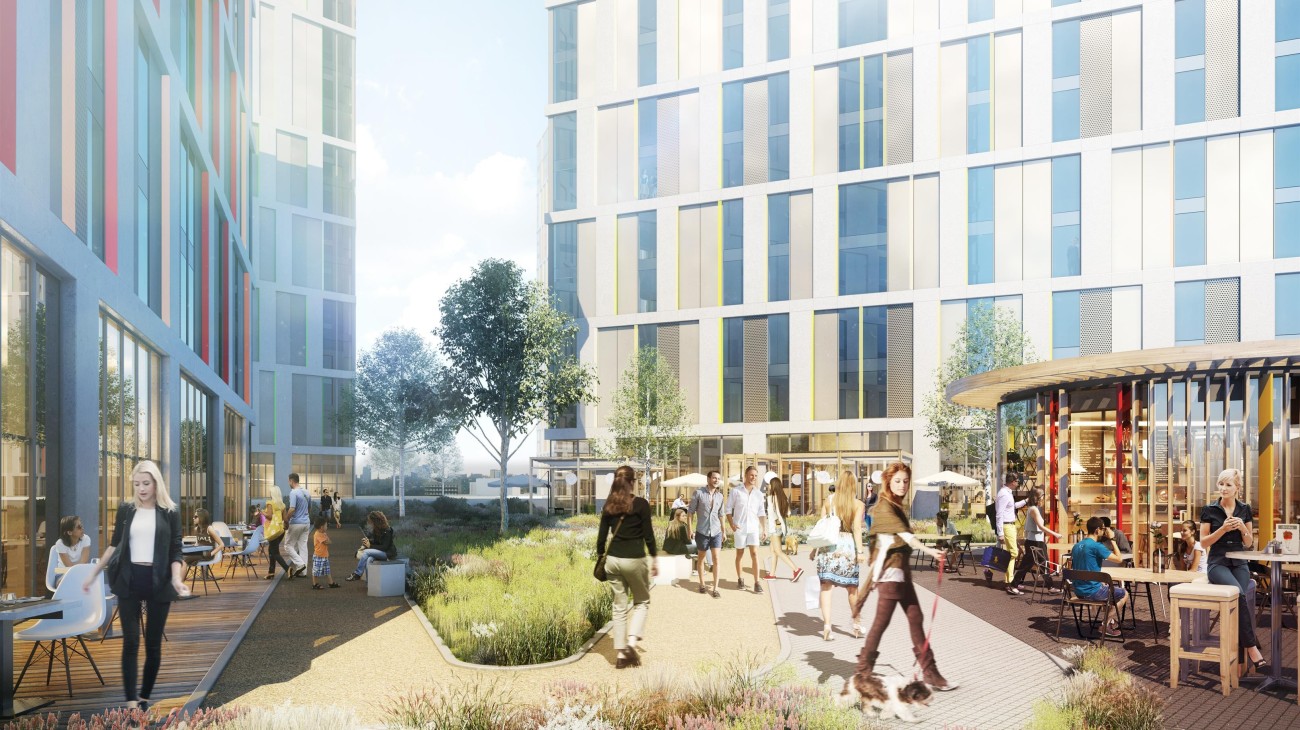CGL’s design focuses on fostering an integrated community within the village and within Manchester.
Due to be the tallest residential scheme in North West England, Trinity Islands will provide 1,400 homes within five elegant towers. Designed by Child Graddon Lewis, this major addition to Manchester’s skyline aims to set the precedent for future developments of this scale, reflecting the significant growth taking place in the region.
The Trinity Islands’ towers will offer residents the ultimate in convenience, with farmer’s markets, retail units and educational facilities forming the core of a city-centre village. This best-in-class neighbourhood will be a high-street and town square to its inhabitants, boasting independent bars supporting locally-brewed craft beer, cafes, community galleries and event space as well as a new boat club which will benefit from direct access to the River Irwell.
Trinity Islands’ mission is centred on creating a sense of community, offering much more than just rooms to sleep in. It will provide facilities, amenities and spaces for social interaction, creativity and events; spaces where communities can form. Trinity Islands will function as a village centre not just for its own occupants, but for the growing neighbourhood in all the nearby residential-only developments; by providing grocery shopping, sport and exercise facilities, green space, education, culture, dining and drinking and affordable flexible workspace.
The design
The scheme has been designed as a composition from a number of key view locations around the city. The orientation and arrangement of the blocks allows sightlines through the silhouette, while maximising the potential of this underutilised site. This approach provides a high density of housing, generating a critical mass in population to support the commerce and amenity that will make this a vibrant and sustainable place to live and work.
The elevational treatment reinforces the compositional nature of the massing arrangement; the colours to each façade will shift in hue and intensity as the angle of view changes, with each tower changing at a different rate as the observer moves around or through the scheme. It is a kinetic design concept, responding to the surrounding transport routes by road, rail, river, cycle or foot travel.
New public realm will stitch the development into the surrounding city, entirely regenerating a derelict waterfront and forgotten piece of Manchester sandwiched between a ring-road, a trainline and a waterway.










 Featured
Featured





